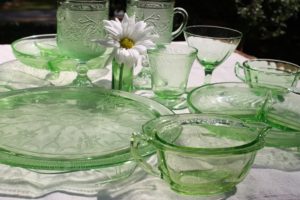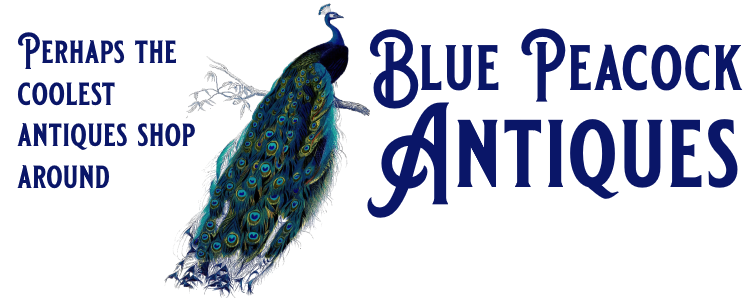DEPRESSION GLASS – A Unique American Collectible
 Beginning in 1929, Americans learned to live on next to nothing due to the Great Depression that took away millions of jobs or drastically reduced the salaries of those who still had jobs.
Beginning in 1929, Americans learned to live on next to nothing due to the Great Depression that took away millions of jobs or drastically reduced the salaries of those who still had jobs.
Depression glass is a visual by-product of the era, mass-produced molded glassware that was of a somewhat poor quality reflected by air bubbles, mold marks and other glass flaws in the glass. Yet the glassware came in a kaleidoscope of colors and patterns, sold for pennies and brought a ray of cheer into many a dreary home of the times.
Depression glass was popular and affordable when it was new. The dime store, where the thrifty homemaker could find everything from toiletries to household goods, was a common source for this inexpensive purchase. An early 1930s Woolworth’s window display advertised an Old Colony pattern sherbet dish and under plate “complete” for 10 cents.
Depression glass was also used as a premium, a free gift with purchase of a certain product or dollar amount of goods. Frugal American women enjoyed getting these colorful “bargain” glass items and placing them in their kitchens.
Glass was plucked from an oatmeal box one week, from a detergent box the next. Sometimes gas stations would throw in a punch bowl and cups with an oil change. Movie theaters would even offer a piece of glass with a ticket to a Saturday matinee.
Manufacturers such as Federal Glass, MacBeth-Evans, and Hocking Glass were major providers of Depression glassware from the late 20’s through early 40’s. Pink, cobalt blue and green are some of the more popular colors with collectors today. Patterns most sought by collectors include Cameo, Mayfair, American Sweetheart, Princess and Royal Lace – cheerful names intended to bring a smile to hard times.
